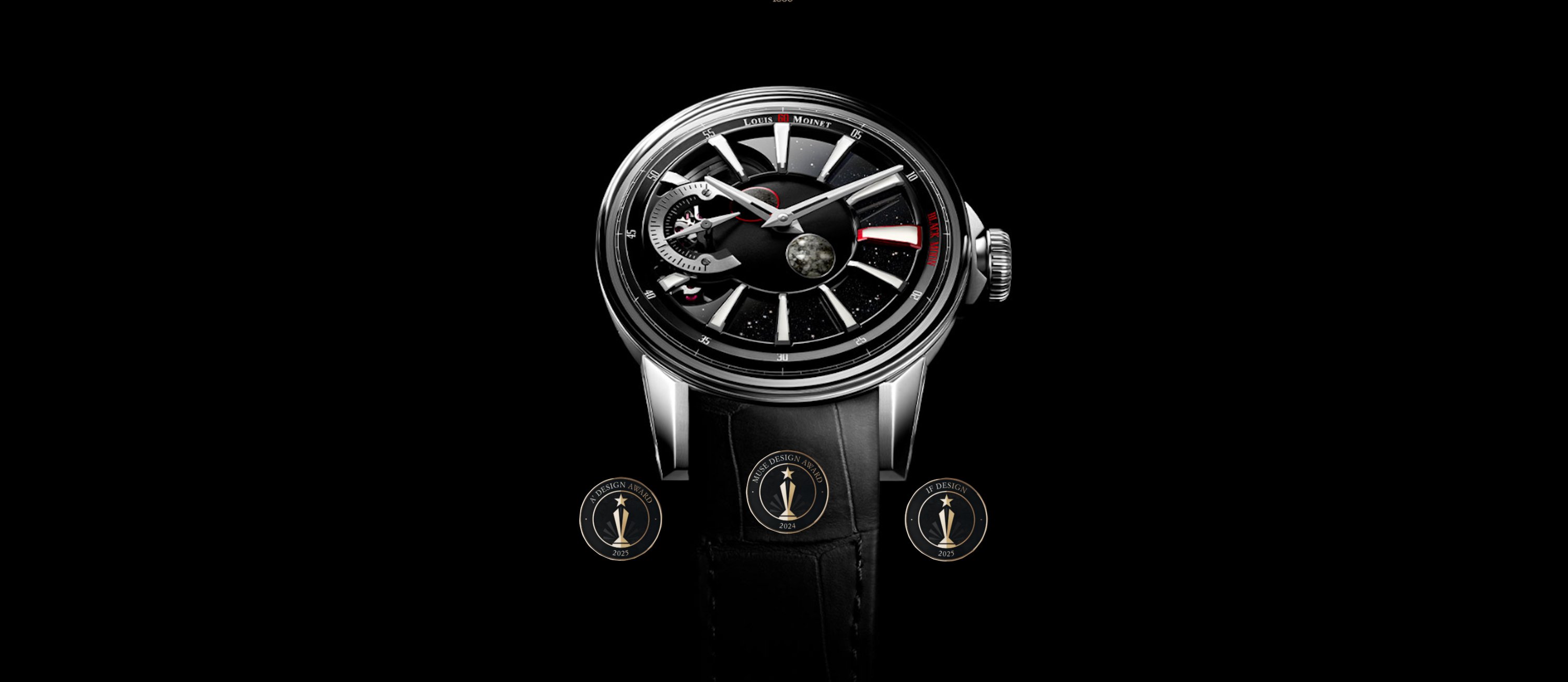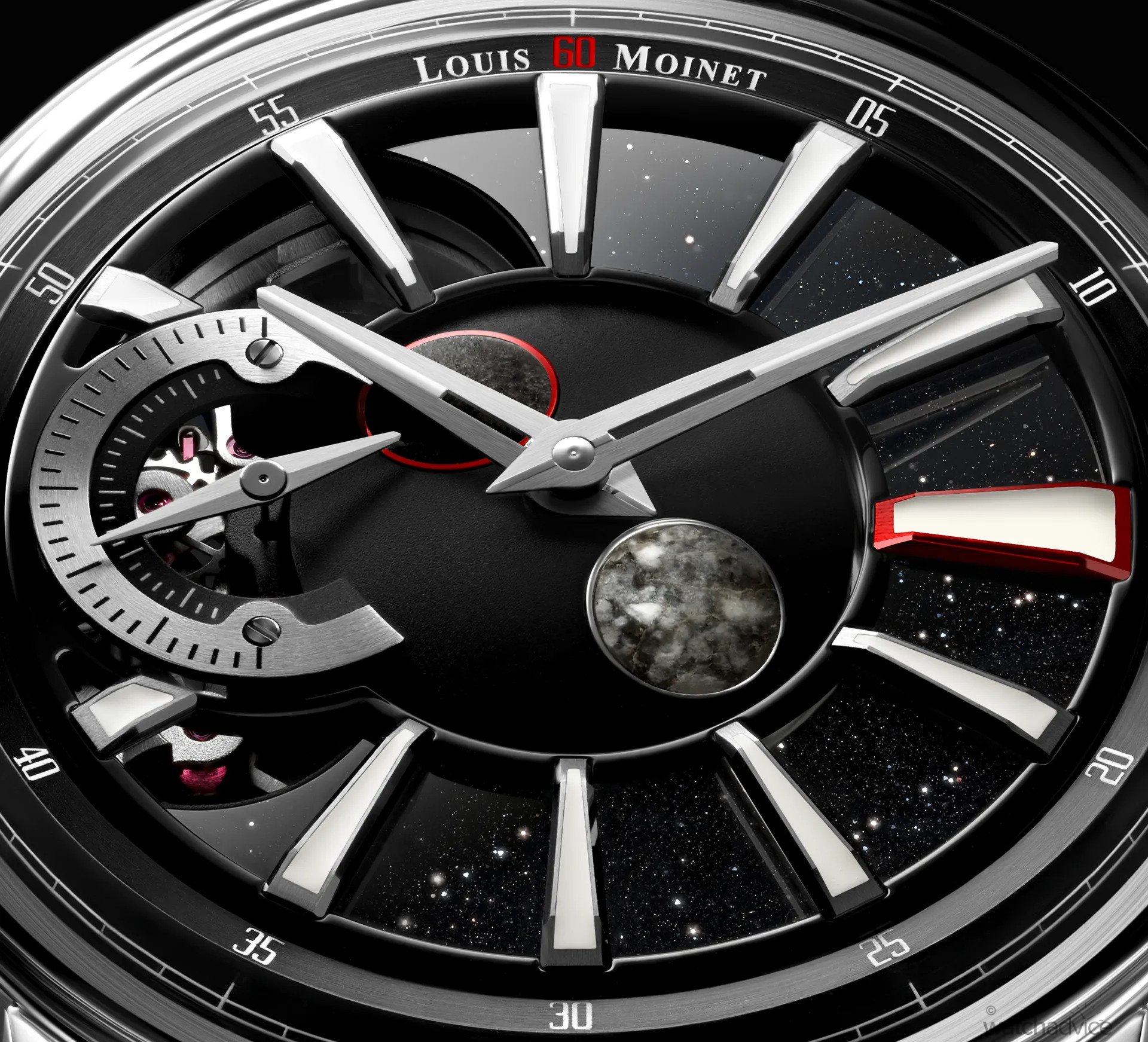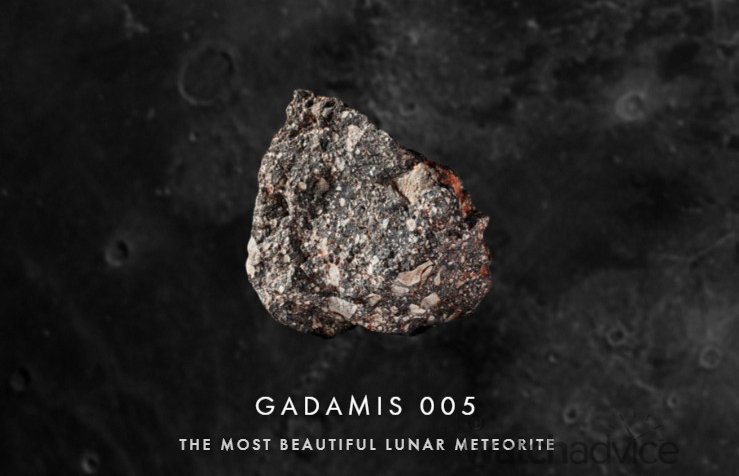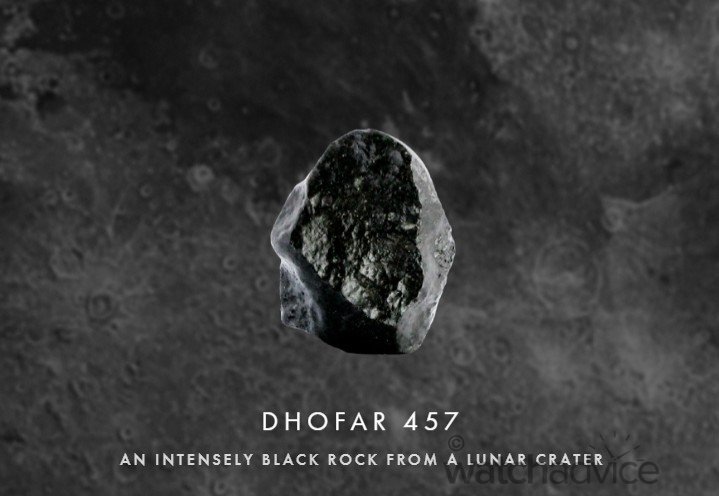Blending science, art, and history, the Black Moon turns the phases of Earth’s satellite into a poetic display crafted from real lunar meteorites. Its innovation and artistry were recognised worldwide, with the Black Moon taking home iF, A’ Design, and MUSE awards!
Late last year, Louis Moinet unveiled a revolutionary new timepiece that retold how the lunar cycle is shown on a timepiece. Named the “Black Moon”, the watch featured a novel display on the lunar cycle, with the full moon and the new moon being displayed by two lunar meteorites placed on a domed central disc. This unique display has earned Louis Moinet Black Moon three international prizes, recognising the innovative design.
This limited-edition timepiece honoured Louis Moinet’s legacy: a 19th-century horologist famed for inventing the chronograph, while also redefining the future of moonphase complications and how they will be displayed. Louis Moinet took this vision further, blending a stunning visual display with cutting-edge watchmaking to create a poetic and mechanically precise display of the cosmos. This timepiece is not just another moon complication; it is one where art, science, and history converge on the wrist.
What made this timepiece even more special was not just the lunar display, but also the various materials used within the dial. Louis Moinet used two separate meteorites for the two moon displays. The first is the Gadamis 005, which has been considered by experts to be the most beautiful lunar meteorite of all. This meteorite has been found in the region explored by the crew of the Apollo 16 mission.
The second meteorite is the Dhofar 457. This meteorite has an intense black hue due to its origin from a lunar crater. Louis Moinet states, “Following an initial impact on the Moon, a subsequent event dislodged a portion of the crater and propelled it into space, where it journeyed until it reached Earth, landing in the Dhofar desert, hence the name: Dhofar 457.” For the Black Moon timepiece, this meteorite indicates the “full moon”. Around the moon disc is a red ring, which stands out beautifully against the black rock.
As an added aesthetic, Louis Moinet has created a starry night sky underneath the hour track, using the stunning aventurine material. This dial portion surrounding the central lunar display has a three-dimensional design, which gives a beautiful layered aesthetic. The central revolving moon complication has been developed through cutting-edge design, made from a gear train that includes a 135-tooth wheel. Louis Moinet states that this wheel “Provides excellent precision. Unlike conventional moon phase displays, the BLACK MOON’s is especially precise, with a deviation of just one day in 122 years.”
Over the last year, Louis Moinet’s Black Moon timepiece has won three distinguished awards. The iF Design Award, regarded as one of the world’s leading benchmarks for excellence in design, has applauded the Black Moon for its incredible fusion of artistry alongside engineering. The distinguished juries highlighted that the technical ingenuity of the moonphase mechanism, while also using rare authentic meteorite fragments, elevated the timepiece into a true cosmic narrative, one that Louis Moinet is all too familiar with.
The A’ Design Award went further, as they recognised the visionary concept at the heart of the timepiece – one that completely reimagines how collectors and enthusiasts can see the journey of Earth’s natural satellite. Louis Moinet has been able to transform a traditional complication into a poetic storytelling device.
Finally, the MUSE Design Award underscored the Black Moon’s striking visual presence and how it created a strong emotion through the timepiece’s sculptural composition, modern, elegant design, and its stand-out appearance at first glance. The Black Moon demonstrates the power of modern technology to create a timepiece that inspires wonder as much as it does with precision.

“20 years after having acquired my first lunar meteorites, I felt like giving our nightly celestial companion a majestic vision. Rather than place her in an aperture, we preferred creating a large central disc with two meteorites cut from special rocks and representing the full moon and the new moon.”
“Would this have pleased Louis Moinet, the man who invented a chronograph to track his astronomical observations? I really think it would have.”
Jean-Marie Schaller – CEO & Creative Director








